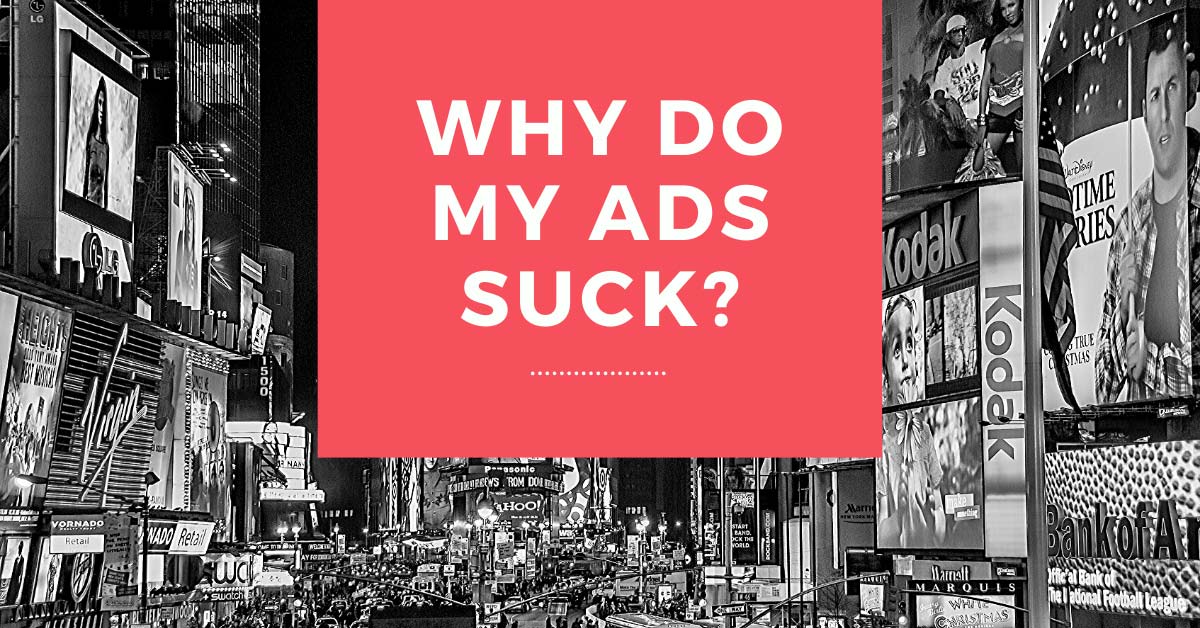Advertising can be costly with no outcome & it can drive more revenue faster than you ever thought possible. How is this one channel both a possible gold mine as well as a money pit?
Not long ago one my clients shared with me that they used to advertise online and stopped because they weren’t seeing the outcome they wanted. This is a very good reason to stop and take stock of your advertising and why you’re investing in it.
Advertising Goals
Yes, I said “investing”. You spend money on advertising and investments are meant to have returns, but are you running the right ad for your goal?
There are 2 categories that most, if not all, advertising goals fit under:
- Sales – In this respect advertising, especially when direct response tactics are used, can help drive short-term wins and sales.
- Trust & Familiarity – (Read: Branding) Now I haven’t come across a small business that can afford branding for branding’s sake, but all businesses want to grow their trust.
The issue I find is that many business run ads to get sales, but the creative (copy, words, message) are not aligned with getting sales. Alternatively, businesses that run ads for trust & familiarity lose patience too quickly and start to demand that their ads start performing and pull out before reaching their goal.
So let’s get clear about what advertising needs to do to drive sales or build trust & familiarity.
Ads for Sales
Running ads to drive sales has been done since the start of time. They go something like this:
“I have product A that does X, Y , & Z. Act now to get this product for $Z. “
Over time the messages haven’t changed much. There’s a product that promises to help people achieve some intrinsic or external benefit AND, most importantly, there’s an offer – something that motivates action.
The offer is where so many businesses fail to create sales driving advertising.
Sales driving advertising is about short term gains. In the short term (think hours, days, or a few weeks), getting someone to decide to purchase a products, after reading/seeing your ad requires getting over quite a hurdle.
For most, your product was not on their mind, not a need, or a requirement. So, the offer needs to be compelling enough to cause a person who had no intention of paying for your service or product.
An ad meant to drive sales must align with that intention. Meaning the call-to-action must be about talking action to buy, request a quote, or submit a lead form. Messages like:
- Visit this page to get this discount.
- Sign up to be the first to get this with our pre-sale.
- Only a few in stock.
Maybe you’ve heard of “Direct-Response Marketing”. This is a whole discipline of marketing that uses messaging to drive action.
When your ad talks about new features, the time it took to design, or the values of your company, are you really motivating someone to purchase in the short-term?
No.
Ads for Trust & Familiarity
Advertising that doesn’t drive action of your customer is all about trust & familiarity.
Otherwise known as….Branding.
This can be a divisive topic, but it shouldn’t be. Branding is important. It helps customers connect with your brand, identify with it. Branding builds trust and an aversion to switching, otherwise called loyalty.
The pitfalls I most commonly see are:
- Having too little patience and giving up after less than 12 months
- Too small of a budget
A brand is built on a time scale of generations. Not months.
Don’t believe me?
- Which laundry detergent did you first start using? (Are you still using it?)
- Your dish washing soap? Shampoo? Shaving cream?
- Where do shop for groceries or clothing?
My guess would be the same product your parents used and many of the same stores you went to as a child.
Your parents’ generation passed those habits & loyalties to you. That’s 2 generations. Where did your parents learn to use those brands?
Yes, their parents.
That’s 3 generations.
Now, when you see ads for the products you use, are you motivated to buy?
Probably not.
Instead, those ads reinforce your loyalty and help you to continue to identify with them.
When approaching advertising for branding (Read: trust & familiarity) you need to think on a longer timeline, because longevity breeds trust. Advertising for less than 12 months or is too short.
Think 10 years or even 20, because we need to span 2 generations at least. And don’t stop, ever, in that time frame.
This method will be costly and your return won’t pay out for a generation, but when you’re the only one advertising after a generation who will people start to trust? You!
Which advertising should your small business use?
LIke anything else, that depends on your business goals.
Are you looking for short term gains (ie: black friday sales, quarterly revenue, new product launch)? Then use advertising aligned with buying intentions.
Are you looking to dominate on a generational scale (ie: be a household name for ears to come)? Use Branding.
In all likelihood, the answer is probably both.

